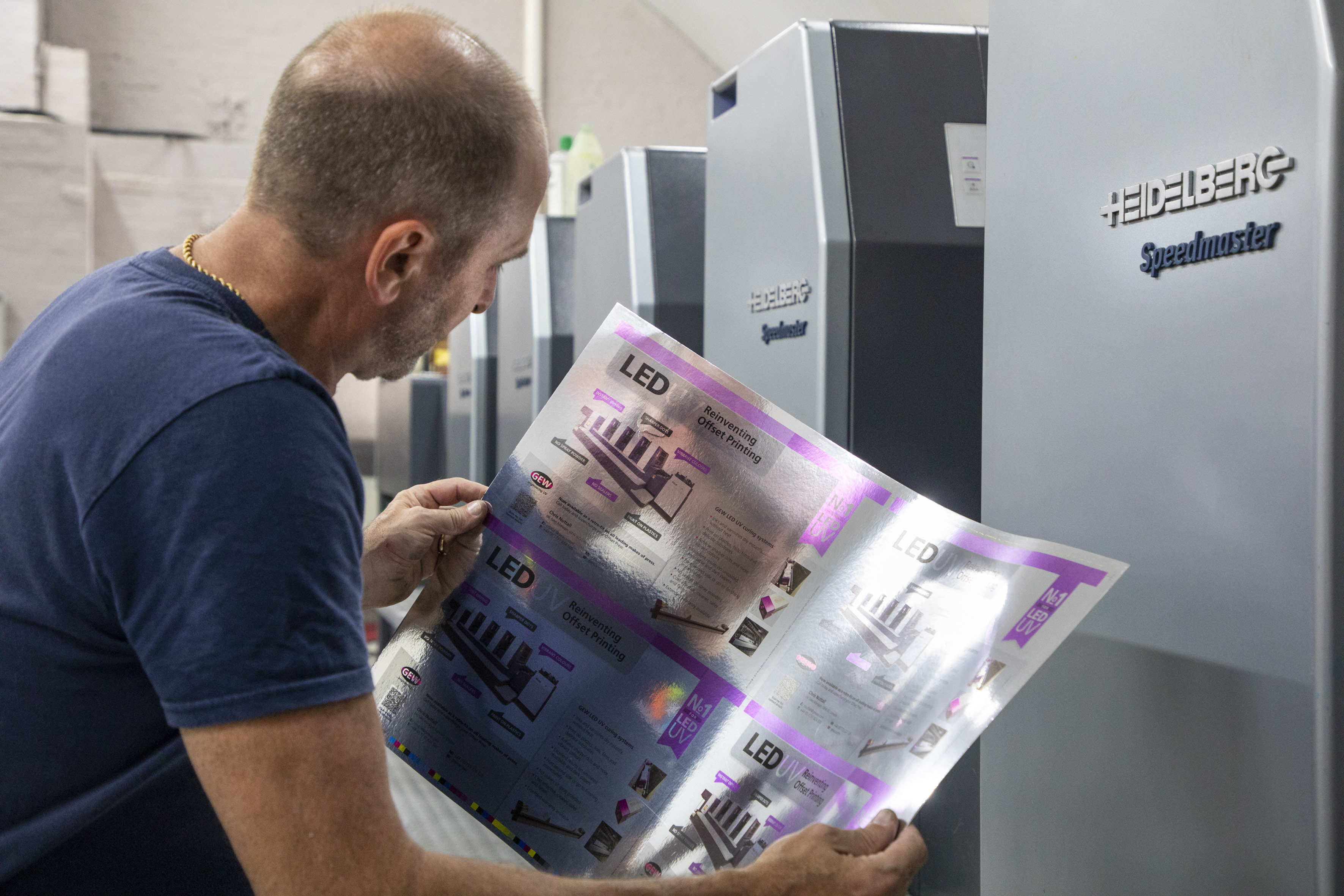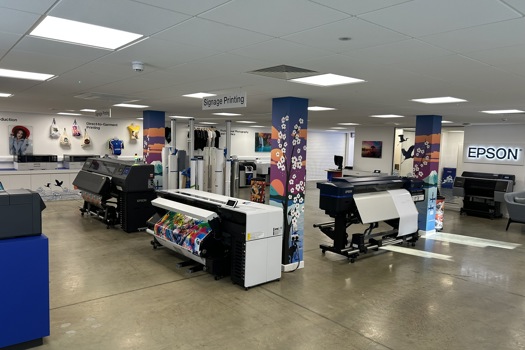Conventional print production in the general commercial sector has not changed dramatically for decades. Machines are faster, makereadies are shorter and press automation is greater, but what has still not changed is the ink.
No matter how fast a press is, and how fast a job can run it still sits on the floor drying once it has been printed, sometimes for several days. All this investment is made to essentially produce more work-in-progress (WIP), which in turn requires more production space to store. To many this seems counter-intuitive, as surely it would be better to be able to process the printed job immediately?
Many printers have found the solution in UV LED curing, either specified from new or retrofitted to an existing machine. However, if that is the answer, why has it not been uniformly embraced within the industry? A significant factor in this is the common perception that UV LED inks are expensive, and this can be enough to end any interest in researching the technology. What is often overlooked are the overall raw costs of a printed job. Substrate is typically 50-70% of the total job cost, machine time is 15-20%, etc. The typical ink cost is usually only 3% of the total job cost, on average.
There are alternative means available to deal with conventional inks. However, the most commonly used techniques have their own problems. Spray powder is wasteful, messy and creates many problems in the downstream process, such as clogging rollers and plates in finishing. Machine sealing still requires time to dry and creates additional job cost that cannot be recovered, while altering the appearance of the surface of the substrate, if only slightly.
A third option is to apply an aqueous coating to seal and protect the printed surface. However, this requires the press to be configured with an inline coater, often with a long delivery extension. The press will also need to be equipped with infra-red and warm air dryers, which adds a huge capital expenditure cost, compounded by the ongoing daily cost of running an IR/WA system. In many cases coating units are employed only to seal the printed surface and add no value to the printed job. The energy consumption of a UV LED system is a fraction of that of an IR/WA system, operating costs are typically up to 40% lower for LED.
No spray powder is required In the UV LED printing process, which eradicates the associated contamination, cleaning time and loss of productivity. Furthermore, UV LED inks do not contain harmful VOCs.
 UV LED systems can retrofitted to existing machines with minimum downtime
UV LED systems can retrofitted to existing machines with minimum downtime
UV LED printing transforms the production environment by creating a cleaner factory, while increasing production speed and capacity. It uses less energy and less space than a conventional drying system, and ultimately reduces waste in all areas. The downstream process is simplified as marking and scuffing are eradicated. One of the strongest arguments to counteract that of higher ink costs is the positive impact that UV LED has in significantly reducing the number of costly reprints which are rendered necessary by issues in the printing process.
As the UV curing process is instantaneous, the cured sheet will stay as bright and sharp as the moment it was printed, there is no dry-back or set-off. Severe dry-back is a common cause for job rejection, particularly when printing onto uncoated and recycled substrates. As we know, conventional mineral or vegetable oil-based inks dry back into the surface of the substrate to create faded images after a period of time, and this is not evident during or immediately after a customer press pass. This change in appearance is often only raised by the dissatisfied customer when the job has been finished and delivered.
Immediate curing also enables UV LED printers to easily work with added-value substrates such as Metpol, mirror board, PTE, plastics, foils and film.
However, at he end of the day its simple economics: the sooner a project is out the door, the sooner the client is wowed by the job then the sooner the payment lands in your account – UV LED curing just makes good business sense, talk to any user.
GEW UV LED curing systems can be retrofitted to almost any make and model of press. The company has an experienced engineering and design team who ensure seamless integration with all sheetfed offset machines, such as Heidelberg, Komori, KBA, Manroland and RMGT.
For further information, technical and contact details, visit GEW’s dedicated sheetfed offset webpage: www.gewuv.com/uv-curing-applications/sheetfed-offset-printing
About the author
Jamie Neill is GEW's Sales Manager - UK & Ireland. He has a BSc (Hons) in biomedical science from the University of Warwick and before joining GEW he worked for medical device specialist Sarstedt Group.










